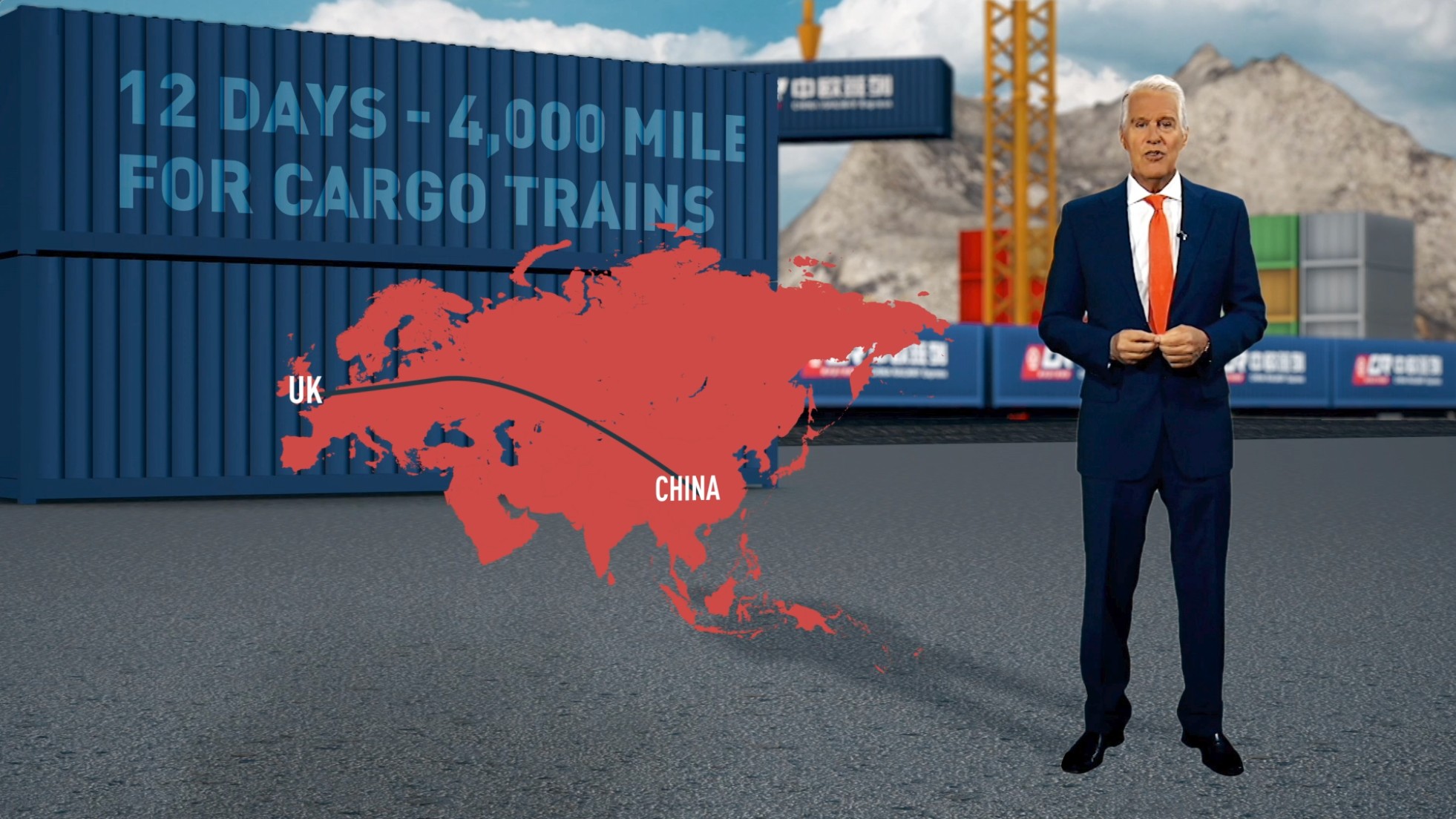03:22

It's the biggest new infrastructure program the world has ever seen – and China's Belt & Road Initiative (BRI) is arriving in Europe.
Traders using the original Silk Road from China to Europe used to take months, bringing precious stones, fabrics and spices. But from May, it will take just 12 days for cargo trains to run the 4,000-mile "Silk Railway" route, which ends in Britain.
The aim is to make Eurasia an economic and trading area to rival that of the Transatlantic. And that's why the opening of a new route this month is so significant, a cornerstone of trillion-dollar investment programs to enhance economic interconnectivity and facilitate development across not just Eurasia, but also East Africa and close to 100 partner countries.
READ MORE: Belgium's cargo industry reignited by Chinese trade
Alongside the rail tracks and the concrete roads, a digital silk road is gaining traction, too: undersea cables and cloud computing are already boosting user data around the world, along with the development of artificial intelligence.
The BRI is about making connections between economies, through roads, rail and cables. Europe can transform transport corridors into growth-enhancing economic corridors and BRI can have long-lasting beneficial impacts on Eastern and Western Europe.
If policymakers hope to engineer a speedy, V-shaped recovery after COVID-19, international economic stimuli such as the BRI could be key to putting a feeble world economy back on its feet – beginning, perhaps, in Europe.
Remember to sign up to Global Business Daily here to get our top headlines direct to your inbox every weekday